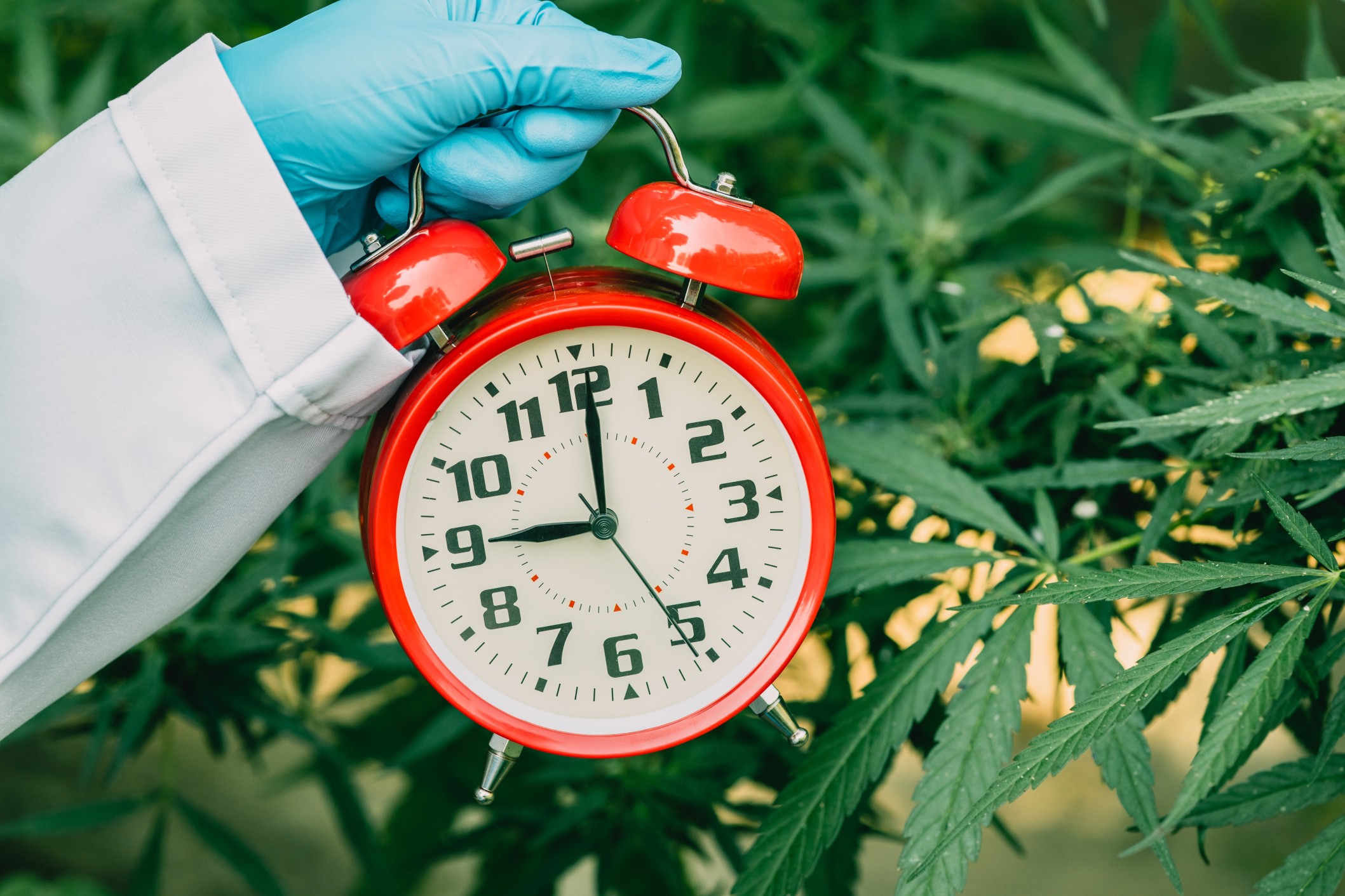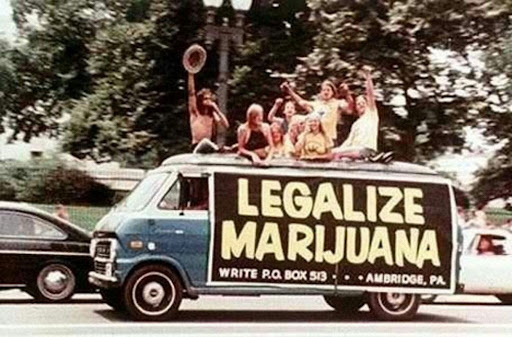
Pot, Mary Jane, Ganja, and Reefer. There are over 1,200 slang terms for everyone’s favorite flower and hundreds of more that describe its effects, quality, and various forms.
Cannabis has been used worldwide for millenniums, which has built it one of the most extensive and complex histories in agriculture. Given its global impact and popularity, the flower had been dubbed many terms of endearment, each varying depending on the region, demographic, age group, and time period.
For Jonathan Green, this has been his life’s work. Green, a slang scholar, dedicates his life to collecting and analyzing what he calls “counter-language.” Green argues that more so than any other sub-set dialect or technicalities, slang is one of the most significant parts of the English language. And through his decades of research, he’s built one of the largest online databases for it.
But why does slang stick for some words but not others? Sugar, for example, has been cultivated for just as long as cannabis – and has an adjacent controversial history. However, we don’t hear people referring to sugar the same way as they do the “green goddess.” So, why did cannabis get so many different names?
To start, things of the taboo, or those that “shouldn’t be spoken about publicly,” typically require speaking in code to maintain the social quota. Once weed became the target of the war on drugs propaganda, it required people to go underground and get creative.
Another aspect that adds to this is that once a trendy term becomes mainstream, it’s time for a change. Similar to memes or other pop-culture references, once your parents (or any authority figure in this case) finds out what it means – it’s not cool anymore. Considering cannabis has been around for centuries, it was bound to get rinsed through the English language cycle dozens of times.
1689-1900: Cannabis’ Earliest Roots
The earliest known term for cannabis in English is “ganja,” though it isn’t actually an English word. Instead, it comes from the ancient language, Sanskrit. Originated in India, the word “ganja” traveled to Jamaica when Britain brought enslaved Indians to the stolen island. With these workers came the knowledge of many plants including cannabis, or what they called, “ganja.”
Over time, the word gained traction throughout the West Indies, before finally making its way into mainland North America. Today, “ganja” is the most commonly used word to describe cannabis in Jamaica.
1900-1936: The Start of Prohibition
Prior to the prohibition era, cannabis was mostly referred to as its scientific name “cannabis” or “hemp.” It wasn’t until the 20th century when a new name arose. According to Green, “weed” was first used around the early 1910s, and it was officially listed as one of the new terms for cannabis in the 1929 edition of American Speech. However, at the time, it wasn’t widely adopted. Instead, “weed” was overshadowed by its more exotic counterpart, “marijuana.”
After the Mexican Revolution of 1910, Mexican immigrants fled to the U.S., introducing to American culture recreational cannabis. Though Americans were growing hemp in the colonies and medically using cannabis concentrates, experts believe that there was no “smokable pot.”
According to Green, the term marijuana likely came from the Panamanian word “managuango” or the Spanish word “mariguano.” Both of these words, when translated into English, mean intoxicant, which supports theories that Mexicans brought the first smokeable and psychoactive cannabis to America.
From there, marijuana became associated with immigrants, and the prejudice towards them then became associated with the plant. Resentment and fear towards Mexicans immigrants instigated a flurry of research that linked cannabis use to violence and crime. Just three years after recreational cannabis use was introduced to the U.S, 3 states had banned its usage. By 1931, it was outlawed in 29 states.
It was during this time that cannabis adopted an “unmentionable” quality. Using the plant became associated with the “racially inferior,” those of lower-class communities, and socially deviant behaviors. Today, many canna-enthusiasts avoid using the term “marijuana” for its racially unjust history.

1936-1950s: The Underground
Because of its abhorrent reputation, those who partook in cannabis were forced to become discreet about it. At the same time, anti-drug campaigners strategically referred to cannabis with terms like “marijuana” to further push the narrative that it was not a “white” thing.
One of the most controversial anti-drug campaigns released during this time was “Reefer Madness” in 1936. The movie depicted teens being lured to smoke cannabis and then engaging in a slew of violent crimes, from a hit-and-run accident to rape and murder.
Though the term reefer has been documented as a word for cannabis since the 1920s, it didn’t gain popularity until after the film was released. Etymologists aren’t certain how it originated, but most believe it’s an alteration of the Spanish word “grifa.” Others claim it was sailor slang, which in sailing, “reefer” means to roll up the sail – similar to rolling a joint.
Pot follows a similar pattern, with many etymologists believing it comes from the Spanish expression “potación de guaya,” which was supposedly a glass of wine mixed with cannabis.
After years of outrage against “evil weed,” Congress passed the Marihuana Tax Act in 1937. This criminalized cannabis, stopping the recreational use of it, and restricted possession of the drug to certain authorized medical and industrial uses.
1960s-1980s: Counterculture
Counterculture was a defining characteristic of the 60s, and with that came peace, love, and lots of bud. Without the flower power of the 60s, cannabis would not be where it is today. Progressive hippies were a turning point for the plant’s contentious history.
Many terms used during this time opposed the disesteemed names of the past and gave cannabis a much more positive connotation. Names like “flower,” “herb,” and “grass,” highlighted the natural and medicinal qualities of the plant.
Hippie subculture can also be thanked for popularizing “kush,” which comes from the Hindu Kush plants in India. The seeds were brought back to America during the 1970s after travelers trekked the famed “hippie trail” which spans Iran, Pakistan, India, Nepal, and Afghanistan – the plant’s native region.
Another impact of the grassroots movement of the 60s was how it polarized cannabis, with those falling in the middle now strongly moving to either side. Cannabis was officially outlawed, including medical usage, with the passage of the 1970 Controlled Substance Act. However, just 3 years later, Oregon became the first state to decriminalize it. Alaska, Maine, Colorado, California, and Ohio quickly followed suit in the subsequent years.
1990s – Present: A New Age
As the tides changed for cannabis’s reputation, so did its slang. The “too-cool-for-school attitude” of the 90s produced many terms of endearment for cannabis such as “dank,” “doja,” and the infamous “420.” It also resurged the popularity of “pot” and “weed” – despite having originated decades prior.
As more states decriminalized cannabis and started to legalize medical usage, the necessity for secret code names dwindled. Today rather, slang is used as a “linguistic equivalent of fashion.” In that, it can show support for a community, identify one’s level of authority (if they’re a newbie or veteran), and create a sense of belonging.
While nicknames for flower may still be growing, most new terminology describes the various ways to partake in cannabis, such as “hotboxing” or “dabbing.” Even subcategories of the industry have their own unique names like “glass heads.”
For the future of cannabis slang, it’s hard to anticipate the next big thing. But if it’s anything like fashion, expect a resurrection of the 20-year cycle.

